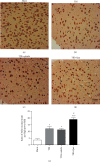Targeting Mitochondrial Biogenesis with Polyphenol Compounds
- PMID: 34336094
- PMCID: PMC8289611
- DOI: 10.1155/2021/4946711
Targeting Mitochondrial Biogenesis with Polyphenol Compounds
Abstract
Appropriate mitochondrial physiology is an essential for health and survival. Cells have developed unique mechanisms to adapt to stress circumstances and changes in metabolic demands, by meditating mitochondrial function and number. In this context, sufficient mitochondrial biogenesis is necessary for efficient cell function and haemostasis, which is dependent on the regulation of ATP generation and maintenance of mitochondrial DNA (mtDNA). These procedures play a primary role in the processes of inflammation, aging, cancer, metabolic diseases, and neurodegeneration. Polyphenols have been considered as the main components of plants, fruits, and natural extracts with proven therapeutic effects during the time. These components regulate the intracellular pathways of mitochondrial biogenesis. Therefore, the current review is aimed at representing an updated review which determines the effects of different natural polyphenol compounds from various plant kingdoms on modulating signaling pathways of mitochondrial biogenesis that could be a promising alternative for the treatment of several disorders.
Copyright © 2021 Leila Chodari et al.
Conflict of interest statement
The authors declare that there is no conflict of interest regarding the publication of this paper.
Figures




References
Publication types
MeSH terms
Substances
LinkOut - more resources
Full Text Sources
Other Literature Sources

